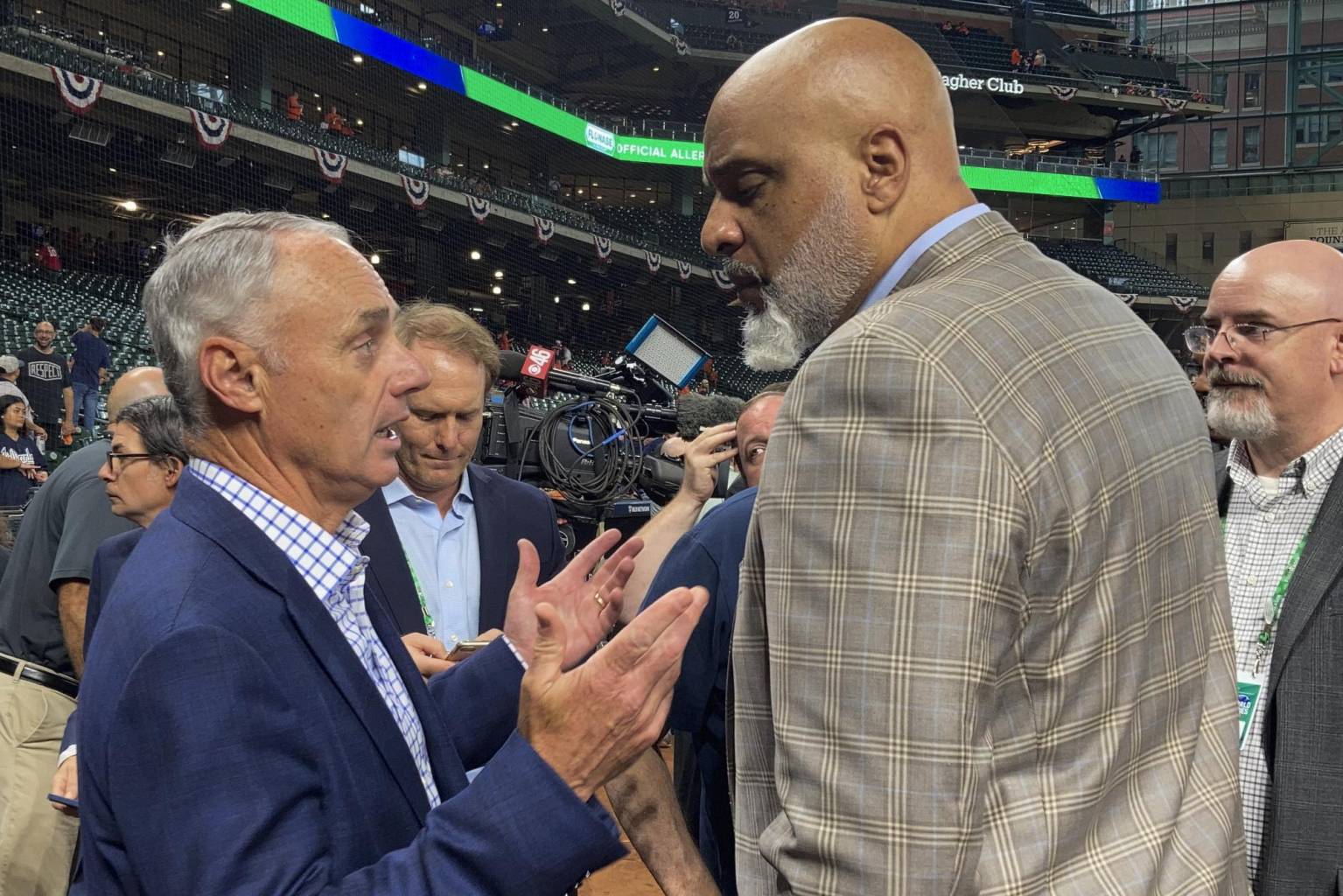Tony Clark was a minor league prospect in the Detroit Tigers system and Rob Manfred was a junior attorney on the MLB management legal team during the sport’s latest lockout.
Now, they are leading multi-million dollar factions of a fractured sport heading for a lockout that would begin when the collective bargaining agreement expires at 11:59 p.m. ET on Wednesday.
“His voice as a player resonates with the players,” Agent Scott Boras said this week of Clark, who heads the players’ union. “This branch of communication is a very important part of the leadership of the union. And I also think Tony has put together a strong legal staff. “
Unless there is unexpected progress during talks at the union’s executive board meeting in Irving, Texas, it would be baseball’s ninth lockout and the first since the seven-and-a-half-month strike of 1994-95 that caused the cancellation. of the World Series for the first time in 90 years. It would also be the first stoppage since the death of Marvin Miller, who led the players’ union for the first five closings and was an advisor to Donald Fehr for the next three.
Clark, 49, after the passage of a dozen years since his last at-bat, stands out from the crowd: He is about 2 meters (6.8 feet) tall, has a deep voice and a beard that has turned white. of a teacher. The former star baseman is the first former player to lead the union, and was hired as director of player relations in March 2010. After union director Michael Weiner was affected by a malignancy, he promoted Clark to director. Deputy Executive in July 2013. Clark took office in December after Weiner’s death.
Meanwhile, Manfred, the 63-year-old Major League Baseball commissioner, graduated from Cornell School of Industrial and Labor Relations and Harvard Law School. He was an associate when his law firm was hired in 1987 as an advisor to the MLB Player Relations Committee, helped negotiate during the 1990 spring training lockout, and was promoted to partner in 1991.
Manfred returned to help during the 1994-95 strike and when a deal was reached in 1996-97, and then became MLB executive vice president in 1998 under Commissioner Bud Selig. He led the labor agreement negotiations in 2002 and 2006 with then-COO Bob DuPuy, led the talks in 2011, and succeeded Selig in January 2015.
The union seeks free agency and more liberal wage arbitration rules, and management’s preference for spending restrictions – like the luxury tax and fan spending brakes – are always among the key components of a contract. The size and format of the postseason is also a perennial economic and competitive issue, along with the expansion of the designated hitter in the National League, a union proposal the majors have signaled they will accept this time.
.
We want to thank the author of this short article for this remarkable material
Former player and lawyer lead MLB to ninth lockout

